Aice Environmental Management Unit 5: Managing resources
1/27
There's no tags or description
Looks like no tags are added yet.
Name | Mastery | Learn | Test | Matching | Spaced |
|---|
No study sessions yet.
28 Terms
food security
when all people, at all times, have physical, social and economic access to sufficient, safe and nutritious food that meets their dietary needs and food preferences for an active and healthy life
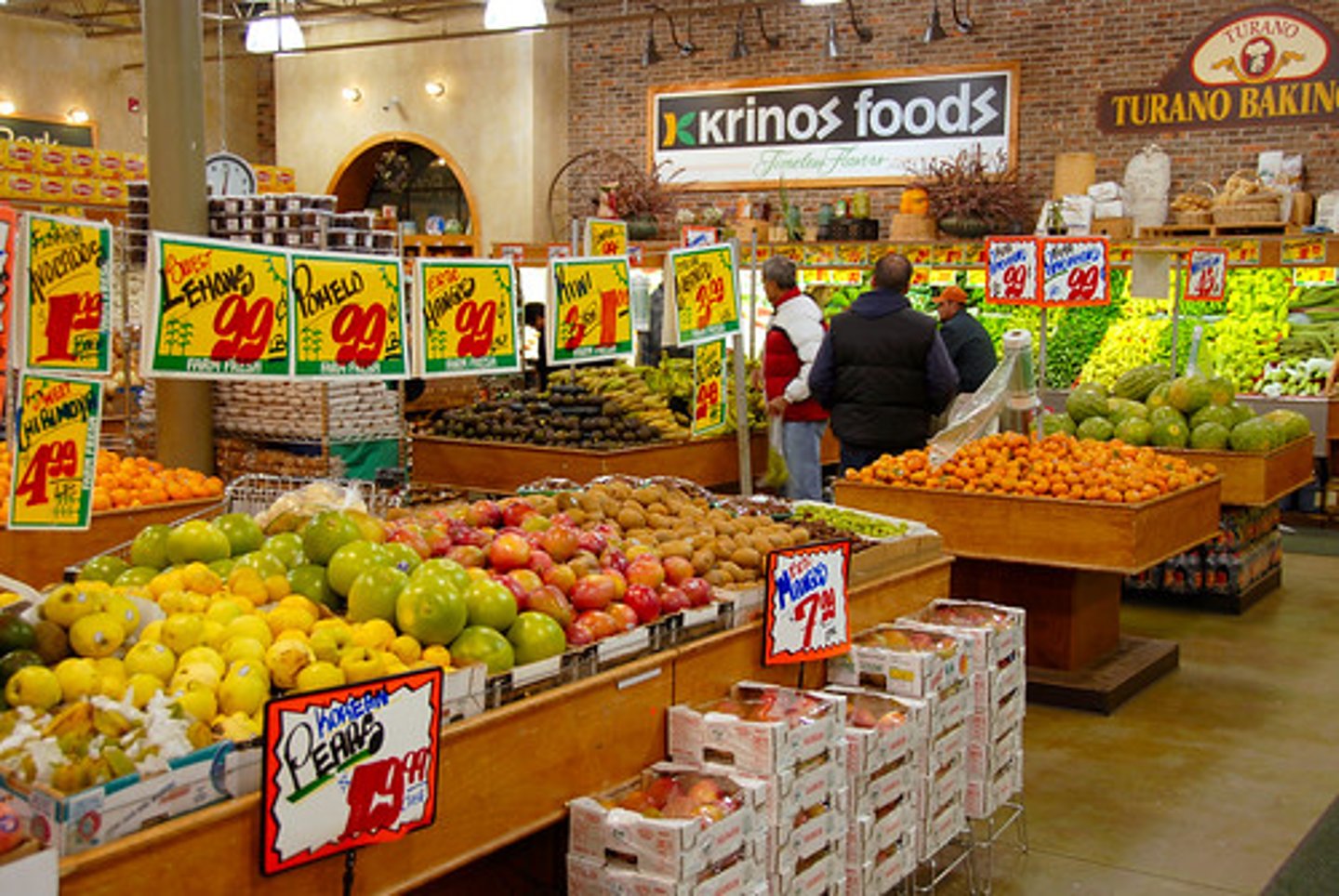
causes of food insecurity and threats to food security
population growth • unsustainable production, increase in homogeneity in global food supply • price setting • land degradation • agricultural disease • diverting crops for biofuels • climate change • water shortages • poverty
impacts of food insecurity
regional food scarcity • nutritional deficiency and malnutrition • poverty • forced migration • conflict • famine • death
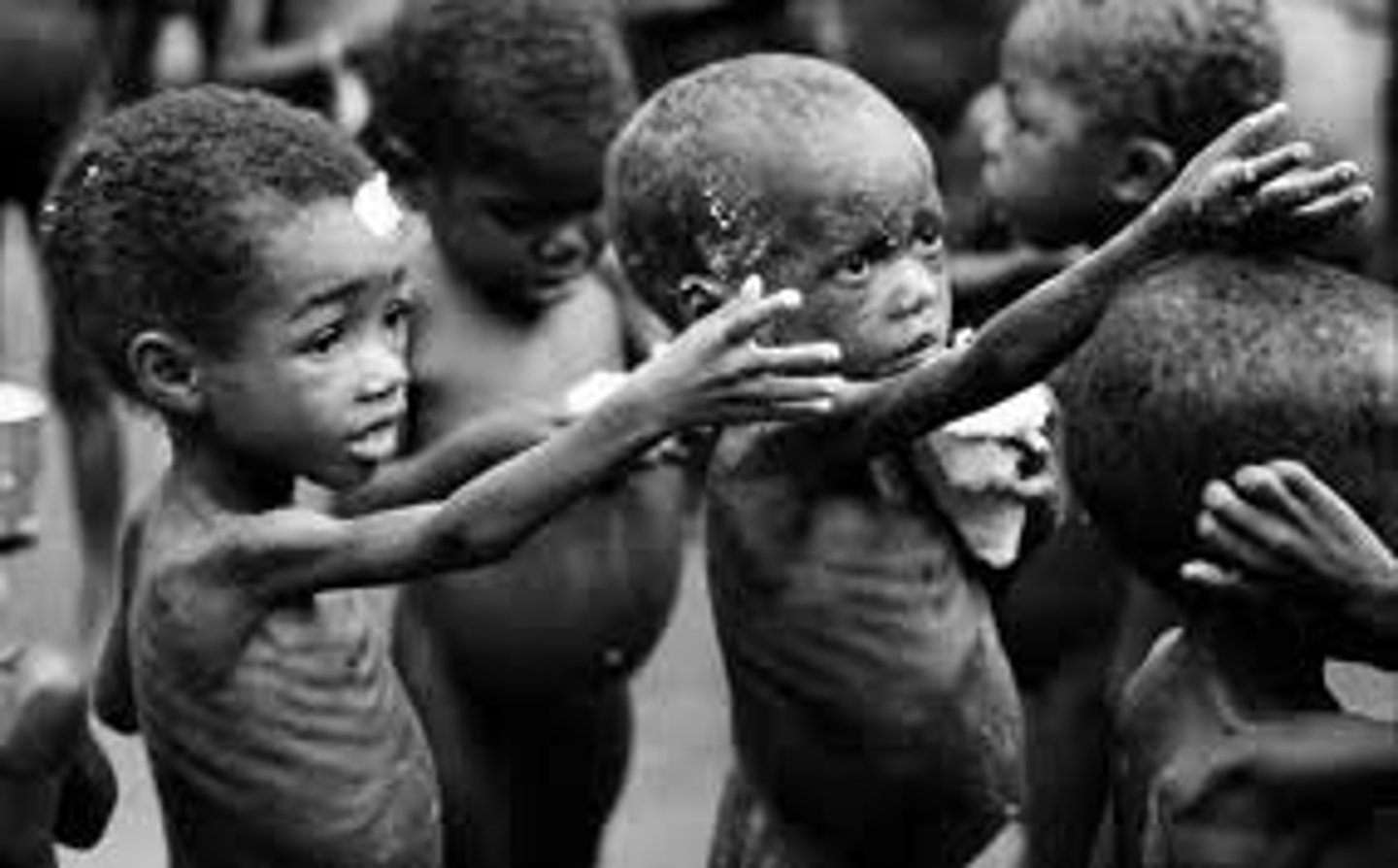
describe and evaluate strategies for managing food security
subsistence agriculture
• increase food production by intensification and extensification
• improved agricultural techniques and efficiency - aquaculture and hydroponics
- use of selective breeding and genetically modified (GM) crops to developing pest resistant crops and crops with a higher yield
- controlling limiting factors, e.g. use of fertilisers in areas short of nutrients
- increasing productivity by removing competition from weeds by the use of herbicides, reducing fungal disease by use of fungicides, reducing pest species by use of biological control
• reduction in livestock and increase in growing crops • reduce food waste
• large-scale food stockpiling • improve transportation of food
• protecting pollinating insects
• the World Food Programme and food aid
• rationing
substinence farming
Growing enough food to feed one's self and its' family
intensification farming
the process of humans changing the style of agriculture to move along the gradient from the lowest impact (shifting cultivation) all the way up to the industrial, high impact forms of agriculture. Intensification means a greater concentration of inputs and/or outputs per unit area.
extensification farming
the process of decreasing the use of capital and inputs (e.g. fertilisers, pesticides, machinery) relative to land area. Due to a decrease in inputs per land area the pressure on the environment may be decreased.
renewable resources examples
- biofuels (biomass including wood, bioethanol and biogas), geothermal energy, hydroelectric dams, tidal energy, wave energy, solar energy, wind energy
Non renewable resources examples
- fossil fuel (oil, natural gas, coal), nuclear energy using uranium as a fuel
energy security
as the reliable availability of energy sources at an affordable price with a consideration of the environmental impacts
long-term energy security
- supply of energy that is in line with economic developments and environmental needs
short-term energy security
- systems that react promptly to sudden changes in the supply-demand balance
causes of energy insecurity
fossil fuel depletion • inequality in global energy resources • population growth • differing energy needs of countries in different income groups • climate change • supply disruption - natural disasters, piracy, terrorism
Impacts of energy insecurity
disrupted electricity supply to homes and industry • increasing prices for energy resources • increasing costs for industry • job losses, economic recession • increased levels of poverty and low standards of living • reliance on imported sources of energy • civil disruption and conflict
describe and evaluate strategies for managing energy security
increasing energy efficiency • increasing energy production • reducing reliance on fossil fuels • investing in renewable resources and carbon neutral fuels • development of alternative energy technologies • investment in local energy projects • rationing
methods of waste disposal and treatment
landfill sites • incineration • storage • disposal at sea • recycling • exporting waste
impacts of waste disposal methods
contamination of soil leading to leaching and contamination of ground water • build-up and release of the greenhouse gas methane (CH4) with a danger of explosions • visual and noise pollution and unpleasant odour • risk of spread of disease • release of toxic substances • bioaccumulation and biomagnification • plastics and microplastics in oceans
Bioaccumulation
The accumulation of a substance, such as a toxic chemical, in various tissues of a living organism.
Biomagnification
accumulation of pollutants at successive levels of the food chain
Methane (CH4)
an odourless, colourless, flammable gas. It is the major constituent of natural gas, which is used as a fuel, and is an important source of hydrogen and a wide variety of organic compounds.
describe and evaluate strategies to reduce the impacts of waste disposal
reduce, reuse and recycle • biodegradable plastics • food waste for animal feed • composting • fermentation • use of waste to generate energy • education • financial incentives and legislation
pesticide
A chemical intended to kill insects and other organisms that damage crops.
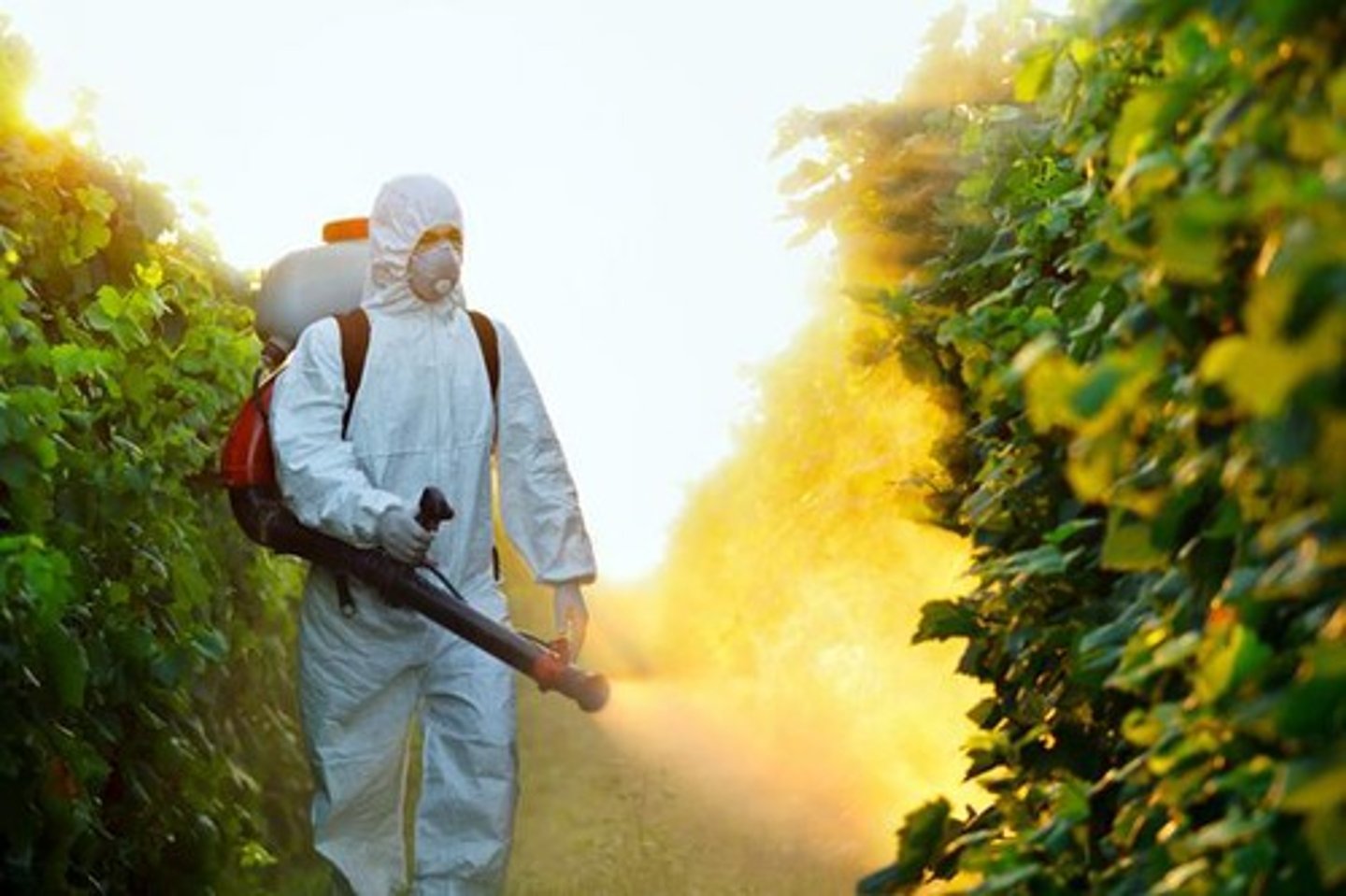
Herbidcide
a chemical to control unwanted plants
Pros and cons of herbicides
con- can be endocrine disrupters ~ can decrease other animal species (like bees)
pro- can reduce weeds
monoculture farming
Strategy in which large fields are planted with a single crop, year after year, resulting in depletion of nutrients over time, and possible introduction of super invasive species.
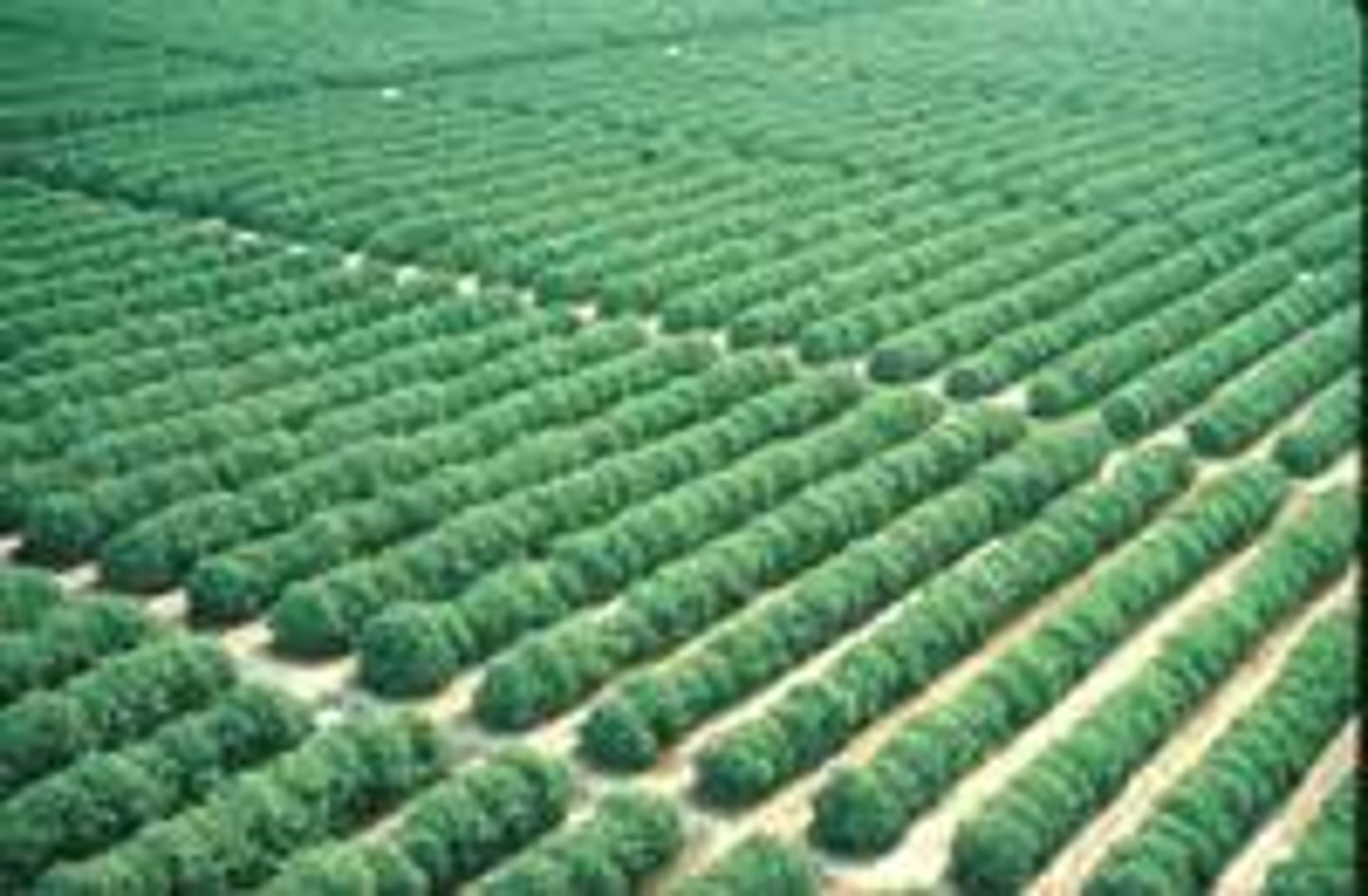
waste management hiearchy
Source Reduction and Reuse
Recycling and Composting
Energy Recovery
Treatment and Disposal

Food Waste Hierarchy
a program that lists strategies for food waste management in their order of importance, beginning with avoiding food waste and followed by reusing, recycling, reprocessing, energy recovery and waste disposal
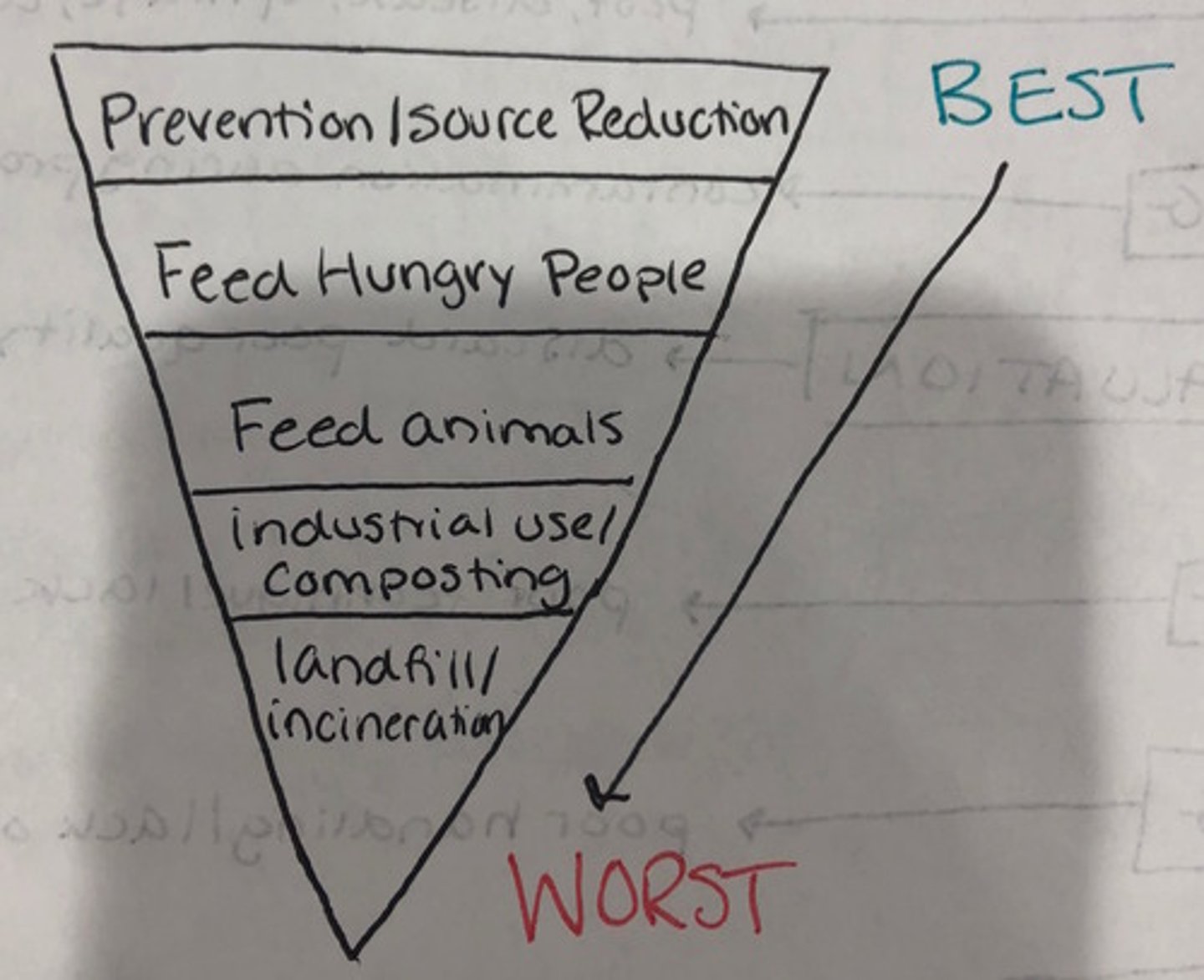
Energy Security Hierarchy
1 saving energy
2 energy efficiency
3.Increase Energy production
4. Renewable energy
5 Energy Recovery
6. ration